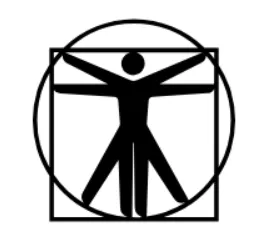A neck hump, also known as a Dowager’s hump or buffalo hump, is a condition that is characterized by a visible bump at the base of the neck. It is most commonly seen in older individuals and is often associated with poor posture and degenerative changes in the spine. Chiropractic care can help improve or reduce a neck hump by addressing the underlying musculoskeletal issues that contribute to the condition. In this blog, we will discuss the causes of a neck hump and how chiropractic care can help alleviate it.
Causes of a Neck Hump
A neck hump can be caused by several factors, including poor posture, muscle imbalances, osteoporosis, and degenerative changes in the spine. Poor posture, such as slouching or leaning forward, can cause the muscles in the neck and upper back to weaken and become imbalanced. This can lead to a forward head posture, which places extra strain on the neck and upper back muscles and can cause the development of a neck hump.
Osteoporosis, a condition that causes the bones to become weak and brittle, can also contribute to the development of a neck hump. As the vertebrae in the spine become compressed and lose height, the neck can become shortened, leading to the appearance of a hump.
Degenerative changes in the spine, such as arthritis and disc degeneration, can also cause a neck hump. These changes can cause the vertebrae in the spine to shift and become misaligned, leading to a visible bump at the base of the neck.
Chiropractic Care for Neck Hump
Chiropractic care can help improve or reduce a neck hump by addressing the underlying musculoskeletal issues that contribute to the condition. Chiropractors use a variety of techniques to help alleviate neck hump, including spinal adjustments, soft tissue therapy, and postural exercises.
Spinal adjustments involve the manipulation of the spine to improve joint mobility and alignment. By restoring proper alignment and movement to the spine, chiropractors can alleviate the pressure and tension that contribute to the development of a neck hump.
Soft tissue therapy, such as massage or trigger point therapy, can help relieve muscle tension and improve circulation to the affected area. This can help reduce inflammation and pain associated with a neck hump.
Postural exercises, such as neck stretches and strengthening exercises, can help improve posture and restore proper alignment to the spine. These exercises can also help strengthen the muscles in the neck and upper back, which can prevent further development of a neck hump.
Conclusion
A neck hump can be a painful and unsightly condition that can affect the quality of life of those who suffer from it. Chiropractic care can help improve or reduce a neck hump by addressing the underlying musculoskeletal issues that contribute to the condition. By using a combination of spinal adjustments, soft tissue therapy, and postural exercises, chiropractors can help alleviate the pressure and tension that cause a neck hump and restore proper alignment and movement to the spine. If you suffer from a neck hump, consult with Dr Greg Kim at SpineCore chiropractic to see how chiropractic care can help you.

